Nemer – Aquarelas Recentes | English Version

MORE OR LESS TRANSPARENT THINGS
Agnaldo Farias | Curator
[…] whose simple forms are work of a thousand endless sandpapers used by sculptor hands hidden in the water, in the breeze. […]
João Cabral de Melo Neto – The chicken egg
For some years the watercolors of José Alberto Nemer portray a confrontation between a constructive orientation and an organic impulse, a struggle he has been perfecting to the complex results of now, in which, at times, instead of tension by vicinity or overlap, there is an interlacing, an approximation between the two terms that is worthy, in the words of João Cabral de Melo Neto, of the purity of the “whitewashed wall” of an egg, of the translucent body of fish eggs, of the ellipsoidal shape of certain rolled pebbles. The artist imposes upon himself a magnificent and ambitious challenge, which only the security of maturity and the control that comes from it can allow. On the one hand, geometry, a product of mental extraction, with its proud, decisive precision, especially if it rests on instruments such as rulers and squares, betraying with this attitude a certain indifference to the world, in what it has of the incomprehensible, insubordinate, indomitable. On the other hand, the stain, a pulsating result of the use of brushes, with their irregular forms, their changing apprehension, corollary of their atmospheric contours, colored as water-laden clouds almost overflowing. To deal with both comes transparency, a fundamental feature of watercolor and, in this case, a proof that the terms that make up the world shouldn´t be treated as excluding, even less as compartmentalized.
In fact, the constructive piece of Nemer’s poetics begins with his choice of quadrangular sheets of paper glued to thin, rigid plastic plates. This is the format of the arena in which his work takes place. The rectilinear edges refined by industrial knives reinforce Matisse’s lesson, according to which the first line scrawled on a sheet of paper is actually the fifth. It can be argued that the quadrangular format is a pattern that has been followed by painters, drafters and engravers for centuries, which doesn`t exclude the fact that it is associated with stability, solidity and other predicates linked to rationality.
With respect to his own action, the constructive dimension is expressed in the use of varied geometric figures, fast and carefully executed with hard graphite pencils, with the support of ruler and compass. Squares, rectangles, grids, hatches, circles, trapezes, ellipses, crosses, arches, pyramids, etc. populate the are settled in dozens, actually in more than a hundred and a half of the pieces presented here, all in a small format, divided in two dimensions, 7 x 10 cm and 7,5 x 12 cm. Part of this repertoire of forms is also present in the larger pieces format, which also feature in this exhibition, starting at 100 x 100 cm, to unusual large dimensions of 150 x 200 cm.
In these larger pieces, geometry is rarefied, shorn, with almost perfect circles and rectangles, since they are almost all made without instruments, but with the bare hand. Even the short and horizontal lines drawn with a ruler that cross the interior of overlapping, smoothly irregular circles at varying spacings and rhythms, have dissolved the meager limits of their filiform bodies, as if from them emanate a fringe of light. A typical effect of the watercolor technique of which the artist is an accomplished master. We will return to this.
In previous works, such as those that were in his important 2003 exhibition, organized by Instituto Moreira Salles, geometry was less laconic, more affirmative, with plans stacked to suggest architectures of totems, monuments and ziggurats; cuts on floor plans similar to the views of a home environment, others related to structural solutions, walls and pillars. Already there were the approximations between the geometric and the organic, but the predominance was of the first. Although they blurred the clarity of geometry, the stains had a secondary role. Today, differently, the relationship is more balanced.
Thinking about the presence and use of the organic element in Nemer’s work, let’s emphasize that it already appears in the use of watercolor, an intricate technique, subject to the idiosyncrasies of water and pigments dissolved therein, more or less heavy, and as already stated, with the transparency as its greatest predicate. The mastery of the artist in this language is impressive, his pieces, especially the larger ones, appear as celebrations.
Diluted in water, the pigments run through the sheet of paper, guessing its tiny cracks, gaining speed in the valleys and cliffs more noticeable to the touch than to the eyes, then slowing down and forming puddles in some sections. With this behavior, the watercolor reveals the rugged topography of the paper. Pooling or gushing through the microscopic channels, the result varies according to some decisions of the artist: as much as he soaks the brush, the making of superimposed diaphanous planes, the gradation of colors that, placed on top of each other, change while altering the others, and, finally, the way in which the process is controlled, leaving the sheet of paper lying flat on a table or tilting it, or even tilting it and twisting it sideways, to induce the draining of subtle waves of color. And therein we comprehend the use of sheets glued in plastic resin sheets, facilitating paper handling, preventing it from bending.
One of the most highlighted peculiarities of the watercolor technique’s susceptible way is in the way the boundaries of the drawn shapes – rectangles, circles, ellipses, other geometric figures – by means of the wet brush are underlined by the stagnation of the delicate colored water slides on paper when they dry. A very different thing are the limits obtained when the brush lets the colored water slide remain loose, as a horizontal veil spreading on the surface, like the waves that die at low tide in immersed reverberations. Though sharp, these borders are slightly corroded, serrated, like the edges of knives, the contours of mountains, among other endless examples which, seen close up, with magnifying lenses, follow the complex geometry of fractals.
And let’s not think that small-format watercolors are less important. The artist has selected a large number of them, which clarifies his laboratory vocation. The amplitude of events and motives explain its potentiality. And in them, all the time, it happens the interpenetration of stains and smudges with geometric figures, between reason and (relative) decontrol. The limpidity of forms struck with ruler and compass, the immediate understanding they provide is blurred by clouds of color, by colored shapes similar to alveoli and cells inflated of tonalities; there is a long series starring larger and smaller circles and spheres, another drawing on the architecture of walls, stacked bricks.
Nemer raises the tone of the confrontation between these vectors: if geometry coincides with reason, offering the stable clarity of a form, of a structure, the stain, in turn, as taught by Da Vinci, shouldn´t be taken as a secondary theme: “I am of the opinion that one shouldn´t look down upon the stains of the wall, the coals on the grate, the clouds, the stream of water, discovering wonderful things.” The stain puts the eye to work, its formless nature, enigmatic, ambiguous, leads one to look in another direction. The gaze discovers reasons and relationships that it itself projects. Looking rhymes with imagining and, as Gaston Bachelard wrote in Water and Dreams, “imagination isn´t, as etymology suggests, the faculty of forming images of reality; it is the faculty of forming images that surpass reality, which sing reality.”
Closer contemplation is another virtue of the small format. Works such as these watercolors attract the eye to a very close distance, at point-blank range, inviting it to slow down and watch for variations, for minimal events, which are many. The quantity of this series allows one to have a vision of how prolific this artist is, his unusual ability to delve into themes, unfolding them, bifurcating them, opening new perspectives.
Larger-format pieces, on the other hand, allow for adventures of another order. All the works in the exhibition have no title, a strategy of the artist to avoid undue associations, of those that take attention away from the works, towards meanings outside of them, a deviation that implies blurring their presences. In relation to works of art, as in everything, we are accustomed to seek anything that suggests an explanation, we grasp it with the same eagerness with which one drowning grabs a buoy.
In Nemer’s watercolors, the lucidity of geometry is attacked and misty.
If in some the conflict occurs by overlapping, in others, endowed with the same dimensions, 150 x 200 cm, it operates by juxtaposition. In relation to a set of red plates, in spite of the stridency and charisma of color, it is always contained within all the plates, without exceeding its borders. It should be noted, however, that each plate has its dose of red, from the strongest to the last ones’ faint tone, when the colored shape is almost a whisper.
The stain is murky, mysterious, a puzzle as attractive as it is risky. As for geometry, contrary to what common sense thinks of it, rather than dour and haughty, it unravels exulted. The result is a superior example of José Alberto Nemer’s poetic search, a sublime finding in which the organic coincides with the geometric, fusing.
José Alberto Nemer is a fine artist and Doctor of Fine Arts from the Université de Paris VIII. He has taught at Brazilian and foreign universities, such as UFMG (from 1974 to 1998) and Sorbonne (from 1974 to 1979). Belonging to the generation of the so-called desenhistas mineiros, who have affirmed themselves in the Brazilian art scene since the 1970s, Nemer participates in salons and biennials in Brazil and abroad. His work has earned, among others, the Museum of Contemporary Art of USP Award (1969), the Belo Horizonte Museum of Art Award (1970 and 1982), Museum of Contemporary Art of Paraná Award in the Exhibition of Brazilian Drawing (1974 and 1982), Grand Prize for Travel to Europe in the Global Salon (1973), Museum of Modern Art of São Paulo Award in the Panorama of Brazilian Art (1980). Considered by critics and juries to be among the ten best artists of Minas Gerais state in the 1980s, Nemer has been the honored artist, with a Special Room, at the Centennial National Art Exhibition held at the Pampulha Art Museum in Belo Horizonte (1997/1998). Among his exhibitions, highlights include the Centro Cultural Banco do Brasil / CCBB Rio (2000), those at the cultural spaces of the Moreira Salles Institute, with an itinerant circuit in Brazil (2003 to 2005), and the Anna Maria Niemeyer Gallery, in Rio (2009).
In an essay about the artist’s work entitled “Reason and Sensitivity” (2005), Olívio Tavares de Araújo says: “Only a virtuoso of the watercolor – the most demanding of all techniques, the most inflexible, in which it is impossible to deceive – could give this enormous leap of scale without betraying his essence at all. To my knowledge, no one ever, at any time, made watercolors of Nemer ́s dimensions. But, in spite of their size, they remain, definitely, watercolors. They preserve their nature of chamber music, not symphonic, delicate, economic, always transparently instrumentalized. They seem to have flowed almost with the naturalness of a spring. [I could be swayed by the actual flowing water trail that creates the broad stains in the backgroud. So this doesn’t eliminate (perhaps it increases) the validity of my feeling].”






























